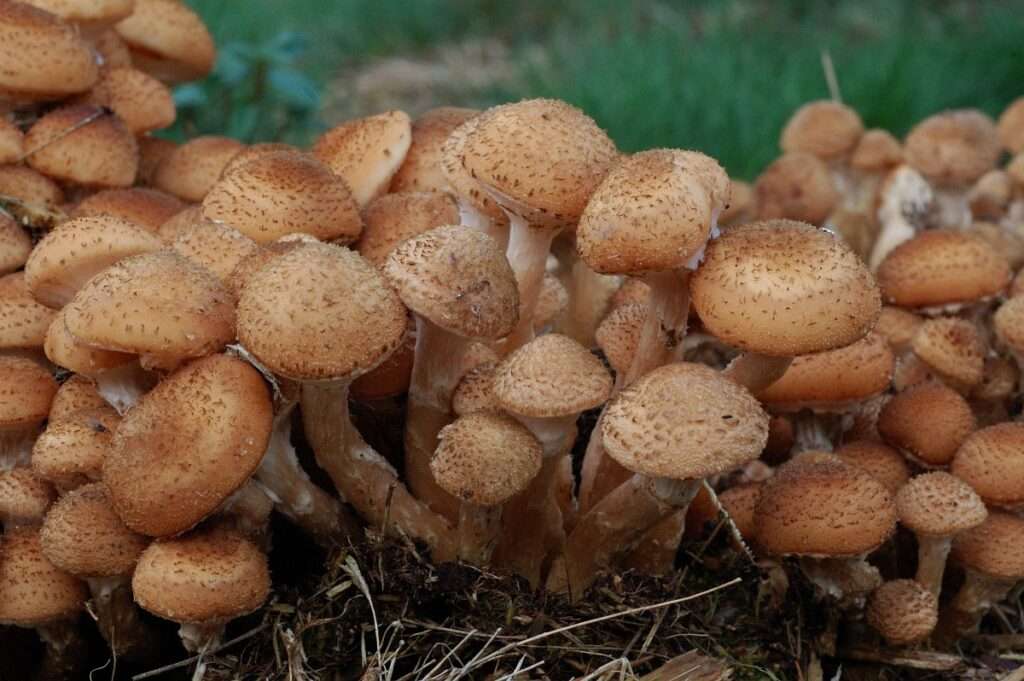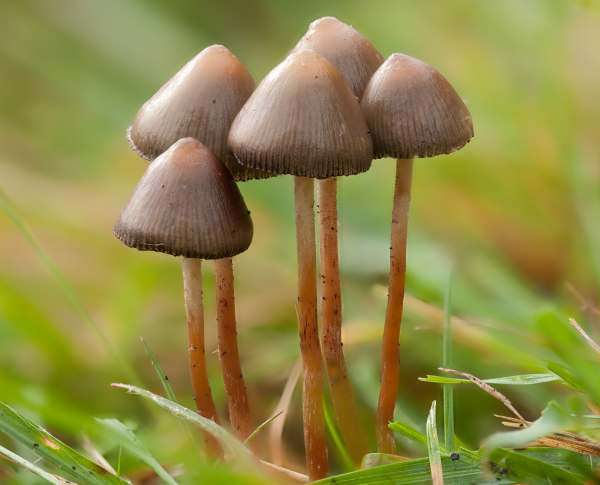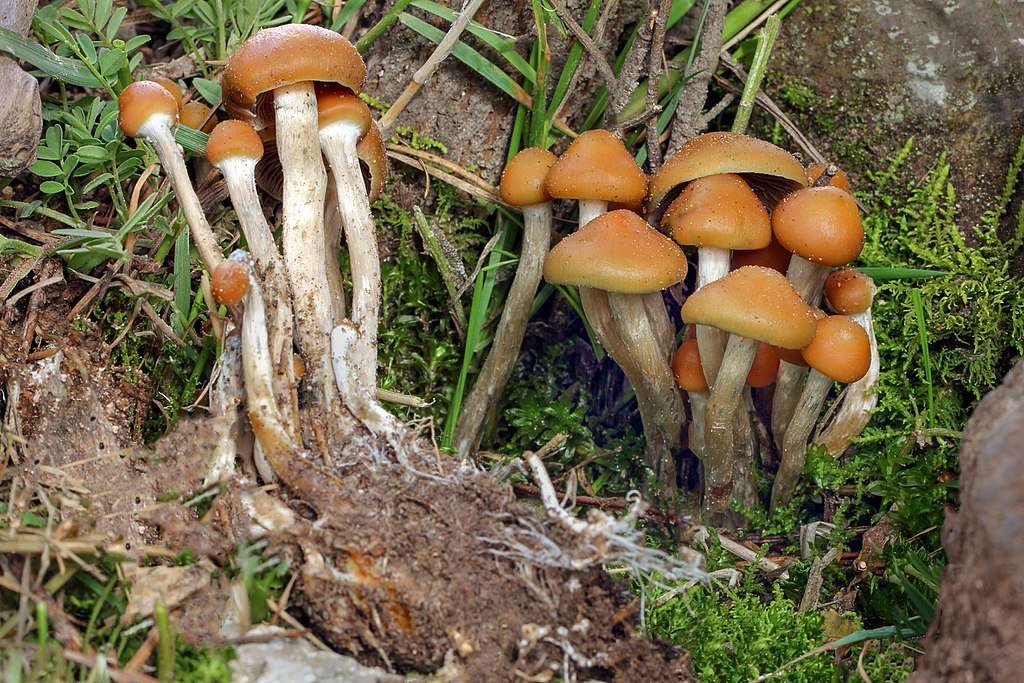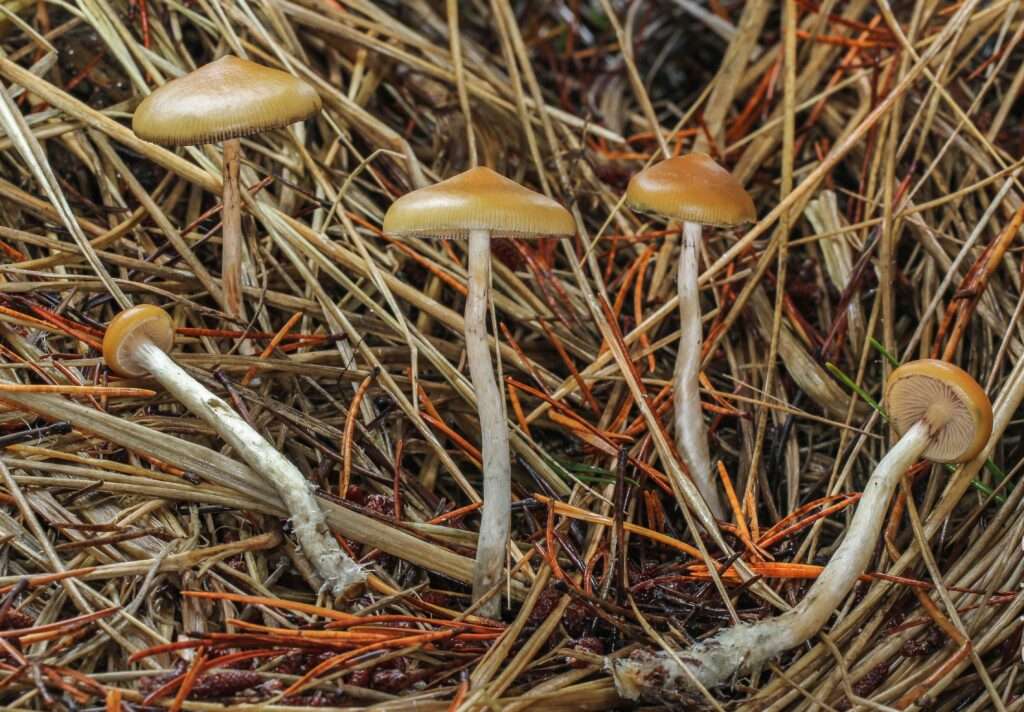
Scientific name
Armillaria ostoyae
Description
The dark honey fungus is a parasitic mushroom. Their cap is 2–15 cm in diameter, is initially convex, has a bent border, and covers the gills with membrane-like cotton. When they get mature their cap expands and becomes flat. It has a hump in the center and a thin, glabrous edge. The cap color is dark brown or red-brown in color. The surface of the cap is covered with dark color scales. Lamellar hymenophores are present. Their gills are thick in texture, darker in color, and but initially are whitish-yellowish in appearance. They are accreted, and occasionally slightly fall on the stem.
The stem of this mushroom is 5–12 cm in length with a diameter of 0.4–1.0 cm. The stem is thick from the apex to the base and can be straight to curve. Its stem has a solid texture with a cavity and a quickly vanishing ring in mature mushrooms. It has a hue similar to or lighter than the cap’s surface, is coated in light flaky scales, and becomes practically naked with age. The ring is white and dissipates shortly. The flesh of this mushroom is thick, and white, and smells delicious. With maturation, the color can occasionally turn pinkish-brown, and the stem base is frequently yellow, remaining the same when cut. They have an odor of weak acidity. They have somehow sweet- bitter taste.

Habitat
The dark honey mushroom is widely spread in Asia, Europe, and North America. They are mostly found growing on both conifers and hardwood. They preferably grow at the base of trees and get nutrition from root rot.
Uses/Importance
Dark honey mushrooms are an excellent source of antioxidants, which by scavenging free radicals help guard against chronic illness. According to studies, some chemicals found in these mushrooms can efficiently scavenge free radicals and stop cell damage. While further studies are required to discover how these mushrooms could impact cancer in people, some study suggests that they might be able to stop the development and metastasis of tumor cells in vitro. The ability of these mushrooms to improve brain function and defend against neurodegenerative diseases is one of their most promising medical applications.
Table





